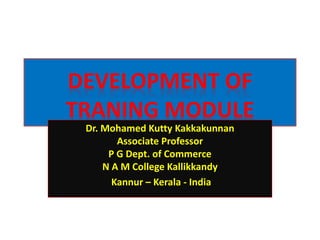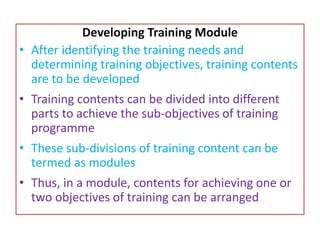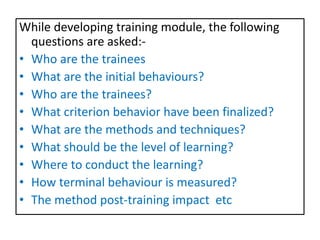This document discusses developing training modules. It states that training content should be divided into modules to achieve training objectives. When constructing modules, one must consider learning theories, sequencing content logically, trainee profiles and expectations, and training objectives. Modules aim to raise trainees' knowledge, skills, and abilities to a criterion level. Different methods and techniques are used based on learning principles. Evaluation is conducted after each module to measure achievement. Key questions to consider when developing modules include trainee profiles, initial behaviors, criterion behaviors, learning methods, environments, and measuring terminal behaviors.





